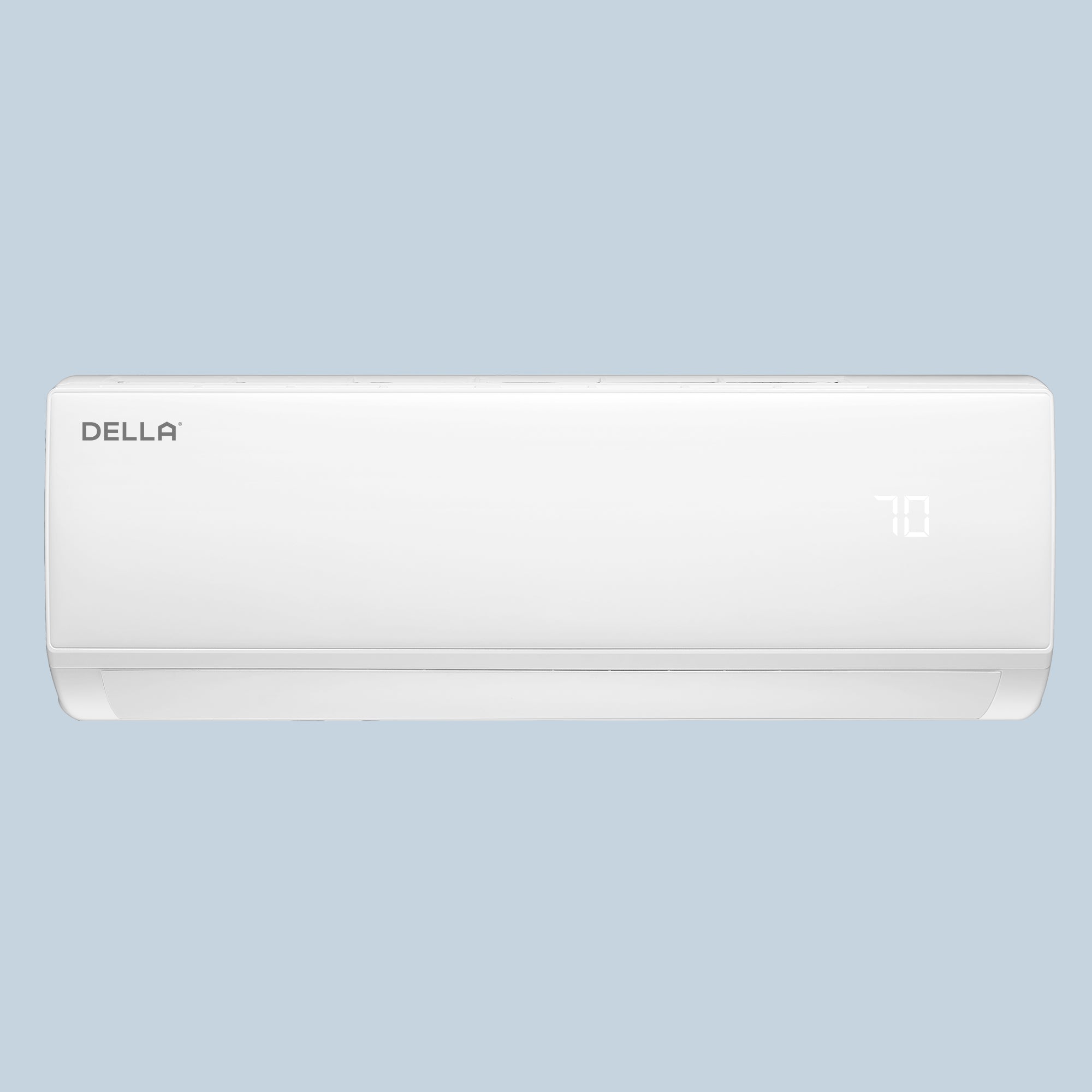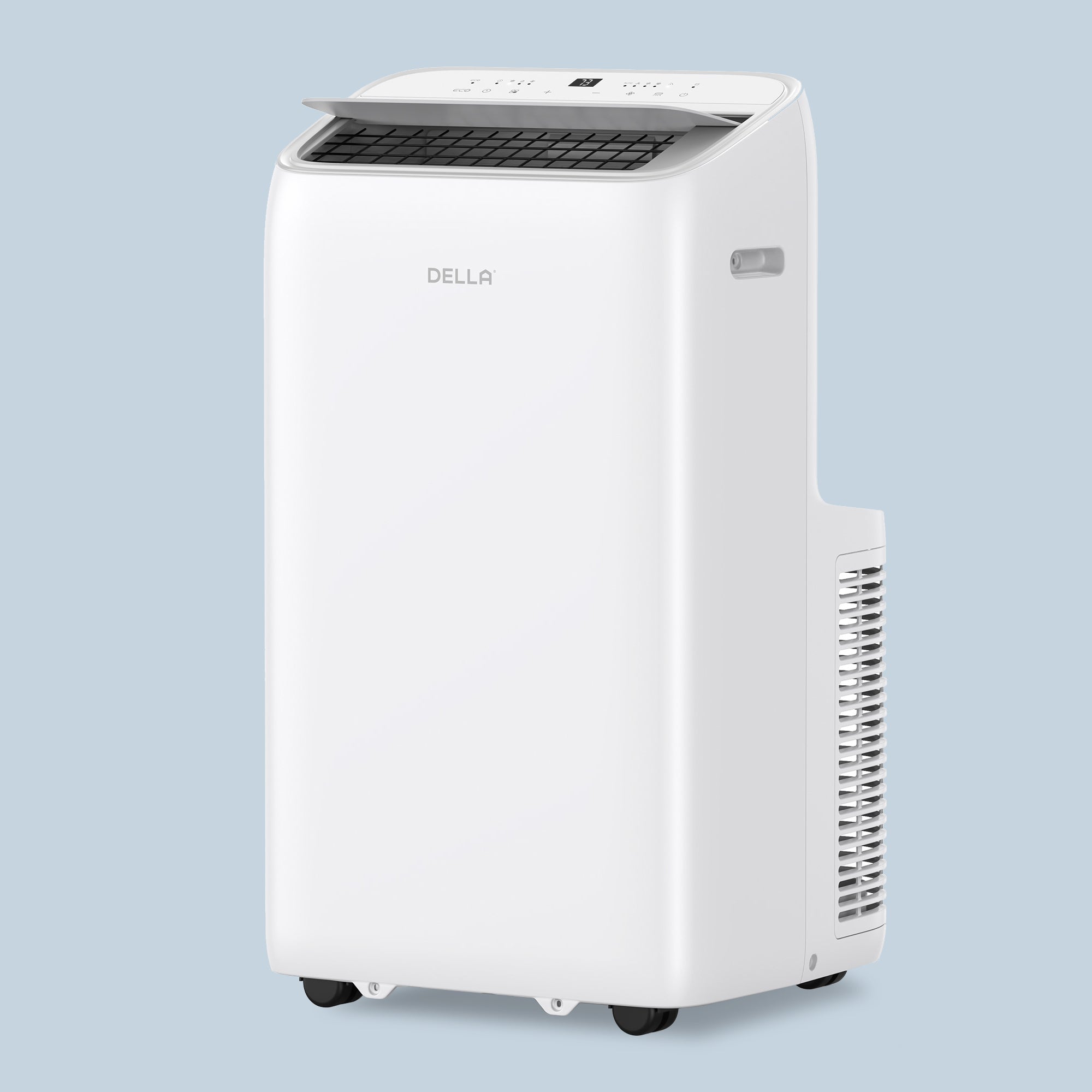In scorching summer heat or chilly winter days, mini split air conditioners gain much favor for their easy installation and cost-efficiency, making them a common heating and cooling solution in homes and offices. If you want to make the most of your mini split air conditioner's features and achieve the best comfort and efficiency, it's crucial to understand how it works.
Della will explain how mini split air conditioners regulate indoor temperature, giving you a deeper understanding of their working principles.
What is a Mini Split Air Conditioner?
Compared with traditional central air conditioning systems, mini split air conditioners are a type of air conditioning system consisting of separate indoor and outdoor units connected by a small duct carrying refrigerant. This design reduces installation costs and increases energy efficiency.
Components of Mini Split AC
Indoor Unit: Installed inside the room, it absorbs heat from the indoor air and releases cool air back into the room. It includes:
- Evaporator: The evaporator contains a series of cooling fins through, which the refrigerant flows, absorbing heat from the indoor air, so that the warm air indoors can be cooled.
- Fan: The fan blows the indoor air through the evaporator, helping distribute the cooled air evenly throughout the room.
Outdoor Unit: Typically installed outside the building, it handles the circulation of the refrigerant and the expulsion of heat. It includes:
- Compressor: As the heart of the mini split air conditioning system, the compressor compresses the refrigerant gas returning from the indoor unit. This compression significantly increases the temperature and pressure of the refrigerant, turning it into a high-temperature, high-pressure gas.
- Condenser: Similar to the evaporator, the condenser also consists of a series of fins. However, unlike the evaporator, the refrigerant in the condenser releases the absorbed heat to the external environment, changing back from gas to liquid. The heat released during this process is expelled to the outside by the fan in the outdoor unit.
- Expansion Valve: Located between the indoor and outdoor units, the expansion valve reduces the pressure and temperature of the refrigerant before it flows back to the evaporator, preparing it for the next heat absorption cycle.

How Does Mini Split Air Conditioner Work?
The cooling effect of a mini split air conditioner is achieved by absorbing heat from inside the room and releasing it outdoors.
Compression
The process begins with the compressor in the outdoor unit, where the refrigerant is compressed into a high-temperature, high-pressure gas.
Condensation
The high-pressure, high-temperature gas refrigerant flows to the condenser, where it releases heat to the external environment. During this process, the temperature of the refrigerant decreases and it changes from a gas to a liquid.
Expansion
Before entering the indoor unit, the liquid refrigerant passes through the expansion valve where its pressure drops, allowing its temperature to further decrease.
Evaporation
In the evaporator of the indoor unit, the low-temperature, low-pressure refrigerant absorbs heat from the indoor air, causing the refrigerant to evaporate back into a gas. During this process, the warm indoor air is cooled by the heat exchange with the refrigerant, and the cooled air is then blown back into the room by the fan in the indoor unit.
Cycle
The evaporated refrigerant gas is sent back to the compressor, compressed again, and the cycle repeats.
How Does A Mini Split AC Work In Cold Weather?
Some mini split ac with heat pumps can heat up indoors in cold weather. In heating mode, the operation of the mini split air conditioner is essentially a reversal of the cooling mode:
1. Heat Absorption: The evaporator in the outdoor unit acts as a heat source, absorbing heat from the outside environment, even in cold conditions. During this, the refrigerant changes from a low-temperature liquid to a gas.
2. Compression: The gaseous refrigerant is sent to the compressor, where its temperature and pressure increase during compression.
3. Heat Release: The high-temperature, high-pressure refrigerant gas then flows to the condenser in the indoor unit, where it releases heat to the indoor air. The warm air is blown into the room by a fan.
4. Expansion and Cycle: After releasing heat, the refrigerant passes through the expansion valve where its pressure and temperature decrease, returning to a low-temperature liquid state. It then cycles back to the outdoor unit to continue absorbing heat.
What Are The Pros & Cons of Ductless Mini-Split Air Conditioners?
By understanding how split air conditioners work, we can easily know some obvious advantages and disadvantages, including:
Advantages
High Energy Efficiency: Mini split air conditioners typically have high Energy Efficiency Ratios (EER and SEER2 ratings). They don't require additional energy during cooling or heating, which means they provide excellent cooling and heating effects while consuming less energy, helping to reduce electricity bills.
Flexible Installation: Since no complex ductwork is required, mini split air conditioner installation is relatively easy and has little impact on building structures. This makes them particularly suitable for installation in older buildings or extensions where traditional ductwork is impractical.
Low Operational Noise: These air conditioners work very quietly. The design of the indoor and outdoor units ensures that most of the operational noise remains outside, providing a more comfortable indoor environment.
Improved Air Quality: Indoor units are usually equipped with filtration systems that effectively filter dust and allergens from the air. Therefore, mini split air conditioners can also improve indoor air quality.

Disadvantages
High Initial Cost: Although the long-term operational costs are lower, the initial installation cost of mini split air conditioners is usually higher than that of window or portable air conditioners, mainly due to the installation needs of certificated professors.
Aesthetic Concerns: Some users may find the appearance of the indoor and outdoor units less neat compared to the hidden traditional central air conditioning systems.
Maintenance Requirements: Although maintenance of mini split systems is relatively simple, it still requires regular cleaning of filters and system checks to ensure efficiency. Neglecting maintenance can cause performance degradation.
Limited Cooling/Heating Zones: A single indoor unit may struggle to adjust the temperature in larger spaces evenly. It is possible to require multiple units to cover an entire home or office space.
How Many Ductless Mini Split AC Units Do I Need?
To determine the number of mini split air conditioning units needed, consider these key factors:
Room Size and Layout
Each indoor unit has a maximum effective cooling and heating coverage area. Measure the area of the room and select a unit that can cover this space. Typically, you need 20-25 BTU of cooling capacity per square foot.
For open-plan or partitioned spaces, additional units may be needed to ensure even air distribution.
Local Climate Conditions
In regions with hotter or colder climates, a more powerful cooling and heating system might be necessary to cope with extreme temperatures.
Building Insulation
Good insulation can reduce heating and cooling loads, potentially allowing for smaller or fewer units. Check the sealing and insulation of windows, doors, and walls.
Personal Preferences
Comfort standards vary by individual. Temperature sensitivity can differ, so you might need to adjust the capacity of the heating and cooling system based on personal preferences.
For additional guidance, a detailed BTU calculation guide can help you choose the right air conditioning unit with the appropriate cooling or heating capacity.
Look for Della for Help
Through this article, you've learned about how mini split air conditioners work, and they are economical, easy to install, and highly efficient, although the installation cost can be a bit expensive.
If you still need advice on purchasing an air conditioner, feel free to consult with Della, a professional hvac manufacturers! We will recommend the best mini split air conditioner for you based on your actual housing layout and personal needs.








LEAVE A COMMENT
All comments are moderated before being published.
This site is protected by hCaptcha and the hCaptcha Privacy Policy and Terms of Service apply.